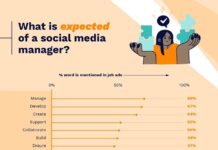In a new study of 1,528 users of a health-related social network, Damon Centola, assistant professor at the MIT Sloan School of Management, has reached the conclusion that social networks do influence behaviors, but that individuals are more likely to change their behaviors while participating in networks with dense clusters of connections, when in close contact with people they already know well.
Researchers typically view these dense clusters of connections to be redundant when it comes to spreading information compared to networks with a greater proportion of long ties. But Centola found that, when it comes to getting people to change ingrained habits, the extra reinforcement that comes from those redundancies made the clustered networks 42% more effective.
The people in the study had anonymous online profiles in a web-based health community that Ventola developed for the studies. Participants were matched with other participants sharing the same interests (“health buddies”). Participants received e-mail updates notifying them about the activities of their health buddies.
Centola placed participants into one of two distinct kinds of networks — those oriented around long ties, and those featuring larger clusters of people — and ran six separate trials over a period of a few weeks to see which groups were more likely to register for an online health forum website offering ratings of health resources.
He found that 54% of the people in clustered networks registered for the health forum, compared to 38% in the networks oriented around longer ties, which means that the clustered networks are 42% more likely to change behavior than the long networks. The rate of adoption in the clustered networks was also four times as fast.
Participation was higher in the clustered network, too: only 15% of forum participants with one friend in the forum returned to it, but more than 30% of subjects with two friends returned to it, and over 40% with three friends in the forum made repeat visits.
“Social reinforcement from multiple health buddies made participants much more willing to adopt the behavior,” notes Centola in the paper he has published in the September 3 issue of Science. This effect on individuals “translates into a system-level phenomenon whereby large-scale diffusion can reach more people, and spread more quickly, in clustered networks than in random networks.”
These findings strongly correlate with research recently released by Bernardo Huberman of HP Labs, which found that tweets are more influential if a user is more closely engaged with his or her followers. (Dr. Huberman will be speaking at TWTRCON SF.) It is also supported by research from Carnegie Mellon University PhD student Brendan Meeder, which was recently cited in Farhad Manjoo’s Slate article as an explanation for the rapid spread of “blacktags” on Twitter.
The bottom line for brands: high levels of engagement can be more influential than large numbers when it comes to influencing behavior.
Read the complete paper in Science here: http://www.sciencemag.org/cgi/content/short/329/5996/1194 (paid subscription)
A press release summarizing the paper is available free here: http://web.mit.edu/press/2010/health-networks.html


